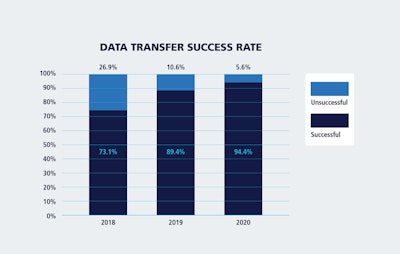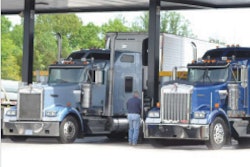Trucking news and briefs for Wednesday, Feb. 3, 2021:
OOIDA, other trucking groups reject liability insurance hike in letter to Congress
A coalition of more than 60 trucking-related associations penned a letter this week to the House Committee on Transportation and Infrastructure to discourage members from voting for an increase in the existing minimum liability insurance coverage required for trucking companies.
The coalition of associations includes the Owner-Operator Independent Drivers Association, the National Association of Small Trucking Companies, numerous state trucking associations, agriculture associations and more.
“An increase in insurance requirements is wholly unnecessary, would do nothing to improve highway safety, and would have a severe negative impact on truckers, farmers, and manufacturers by significantly increasing their operational costs,” the letter states.
The letter also notes that federal research has demonstrated that an increase is not necessary, citing a study by the John A. Volpe National Transportation Systems Center in 2014, which explained, “The vast majority of CMV-caused crashes have relatively small cost consequences, and the costs are easily covered with the limits of mandatory liability insurance. A small share exceed the mandatory minimum but are often covered by other insurance or assets.”

A liability insurance increase is one of the items some believe could be explored further under the Biden Administration after an exploratory Federal Motor Carrier Safety Administration rule to evaluate the current $750,000 minimum was tabled in 2017.
DOL proposes to delay effective date of independent contractor rule
The Department of Labor is proposing in a Federal Register notice to be published Friday, Feb. 5, to delay the effective date of its final rule to define “independent contractor” under the Fair Labor Standards Act until May 7. The rule’s original effective date was March 8.
The delay follows a memo from the Biden Administration calling for certain proposed regulations to be frozen pending further review.
According to DOL, the delay would give the department’s Wage and Hour Division more time to review and consider the rule.
The rule uses five economic-reality factors to help businesses determine whether a worker is an employee or an independent contractor. Two of those factors – the nature and degree of the worker’s control over the work and the worker’s opportunity for profit or loss – are the two primary factors for determining a worker’s classification and carry greater weight than the other three factors.
The other factors include: the amount of skill required for the work; the degree of permanence of the working relationship between the worker and the potential employer; and whether the work is part of an integrated unit of production.
 How well does your ELD transfer data at roadside? | If Overdrive's past reporting is any indication, roadside inspectors remain likely to inspect logs in a variety of ways, from simply glancing at a device's display to more detailed methods, such as those illustrated by the graph above. It comes from FMCSA, part of a February 3 message disseminated to e-log providers following the December 2020 anniversary of a single year under the ELD mandate without grandfathered "AOBRD" devices in play. "Since ELDs first began rolling out in 2017," FMCSA said, "we have been tracking data transfer success rates, and we are pleased to say these rates have been steadily increasing." Data transfers occur when a driver at an officer's request transmits log data from his/her device into a central web server that analyzes the ELD output file for potential violations. To give you an idea of volume, the agency logged 843,323 successful transfers over the whole of last year. The last full calendar year's available inspection data (2019) showed more than 3 million total inspections in the U.S.
How well does your ELD transfer data at roadside? | If Overdrive's past reporting is any indication, roadside inspectors remain likely to inspect logs in a variety of ways, from simply glancing at a device's display to more detailed methods, such as those illustrated by the graph above. It comes from FMCSA, part of a February 3 message disseminated to e-log providers following the December 2020 anniversary of a single year under the ELD mandate without grandfathered "AOBRD" devices in play. "Since ELDs first began rolling out in 2017," FMCSA said, "we have been tracking data transfer success rates, and we are pleased to say these rates have been steadily increasing." Data transfers occur when a driver at an officer's request transmits log data from his/her device into a central web server that analyzes the ELD output file for potential violations. To give you an idea of volume, the agency logged 843,323 successful transfers over the whole of last year. The last full calendar year's available inspection data (2019) showed more than 3 million total inspections in the U.S.
New Love’s open in Nevada
Love’s Travel Stops opened a new location along I-80 in Winnemucca, Nevada, adding 67 truck parking spaces to the region.
The new store also offers a Carl’s Jr. restaurant; eight diesel bays; eight showers; Speedco; and more.









